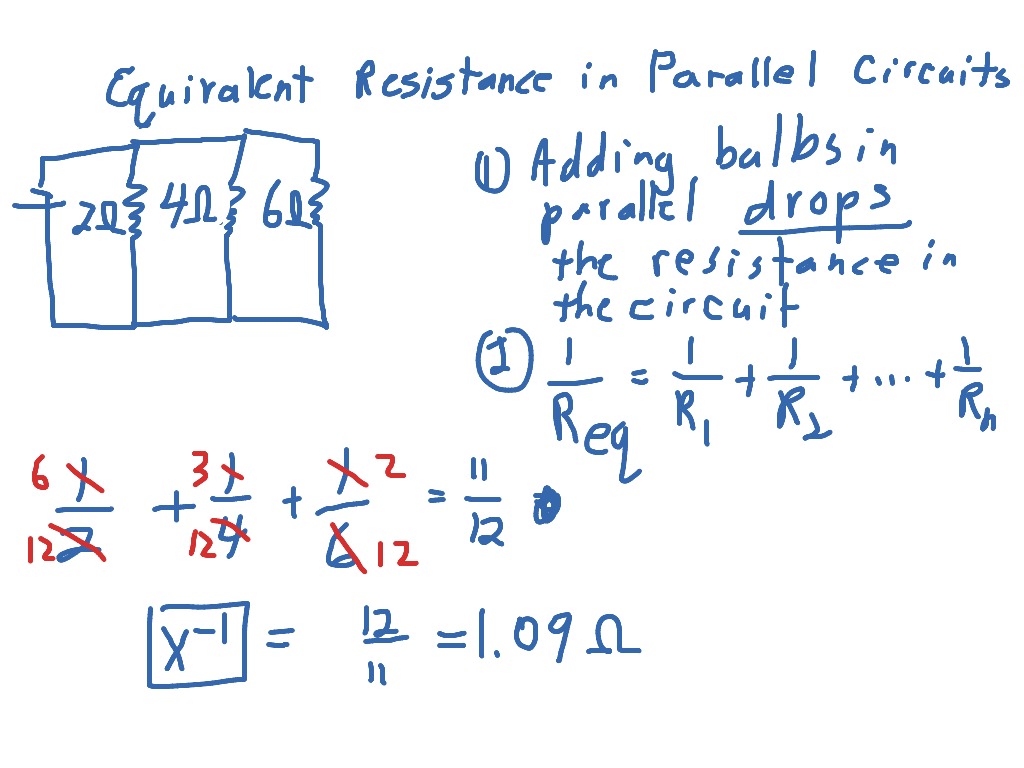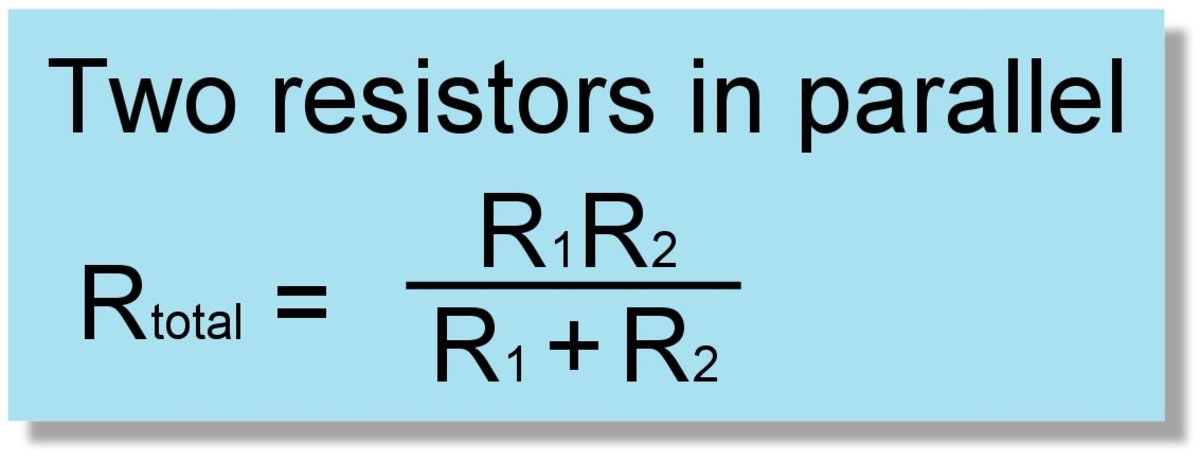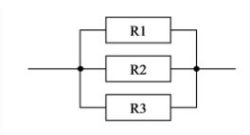

The potential drop across each resistor can be found using Ohm’s law. The equivalent resistance of a 4 and 6 resistor placed in parallel can be determined using the usual formula for equivalent resistance of parallel branches: 1 / R eq 1 / R 1 + 1 / R 2 + 1 / R 3. The current through the circuit can be found from Ohm’s law and is equal to the voltage divided by the equivalent resistance. The first step is to simplify the circuit by replacing the two parallel resistors with a single resistor with an equivalent resistance. In contrast, the second mode allows you to set the desired total resistance of the bunch and calculate the one missing resistor value, given the rest. If the 2 resistances or impedances in parallel square measure equal and of a similar price, then the whole or equivalent resistance. The first mode allows you to calculate the total resistance equivalent to a group of individual resistors in parallel.

#PARALLEL RESISTANCE FORMULA SERIES#
In a series circuit, the equivalent resistance is the algebraic sum of the resistances. The parallel resistor calculator has two different modes. By applying Ohm’s law to the total circuit with voltage (9 V) and current (14.4 mA), we can calculate the total effective resistance of the parallel.
#PARALLEL RESISTANCE FORMULA HOW TO#
How to Calculate Total Resistance in a Parallel Circuit. Check this page to find the difference in its formula. This is the second principle of parallel circuits: the total parallel circuit current equals the sum of the individual branch currents. The only drawback to using this equation is the significant amount of work required to work it out, especially without the assistance of a calculator capable of manipulating complex quantities.\): A simple series circuit with five resistors. The resistance of resistors in parallel is calculated by the reciprocal of the sum of the reciprocal of the individual resistances. Resistors offer resistance to the flow of current in a circuit The effective resistance depends on the connection whether it is connected in series or parallel. Once again, the parallel impedance formula looks like this: The equivalent resistance of the equal resistances connected in the parallel combination can be found by dividing the value of one resistance by the number of.

R n are the resistances of separate resistors, numbered 1, 2, 3.n. In other words, it doesn’t matter if we’re calculating a circuit composed of parallel resistors, parallel inductors, parallel capacitors, or some combination thereof: in the form of impedances (Z), all the terms are common and can be applied uniformly to the same formula. The formula for calculating equivalent resistance in a parallel circuit is as follows: 1/R 1/R + 1/R +. It is noteworthy to mention that this parallel impedance rule holds true regardless of the kind of impedances placed in parallel. According to Ohms law, the voltage drop, V, across a resistor when a current flows through it is calculated using the equation V IR, where I equals the. As we saw in the AC inductance chapter, parallel impedance can also be calculated by using a reciprocal formula identical to that used in calculating parallel resistances. 5 For example, a circuit has two resistors in parallel, each with 4 resistance. where each R on the right-hand side represents the resistance on one branch of the circuit. A worked example of how to calculate resistance in parallel circuits. Just as with DC circuits, branch currents in a parallel AC circuit add up to form the total current (Kirchhoff’s Current Law again):įinally, total impedance can be calculated by using Ohm’s Law (Z=E/I) vertically in the “Total” column. The Parallel Resistor Calculator is a simple tool that may be used to calculate the equivalent resistance in a parallel circuit. To find total resistance R T across the circuit, solve for it in the equation 1 / RT 1 / R1 + 1 / R2 + 1 / R3 +. Now we can apply Ohm’s Law (I=E/Z) vertically to two columns in the table, calculating current through the resistor and current through the capacitor:


 0 kommentar(er)
0 kommentar(er)
